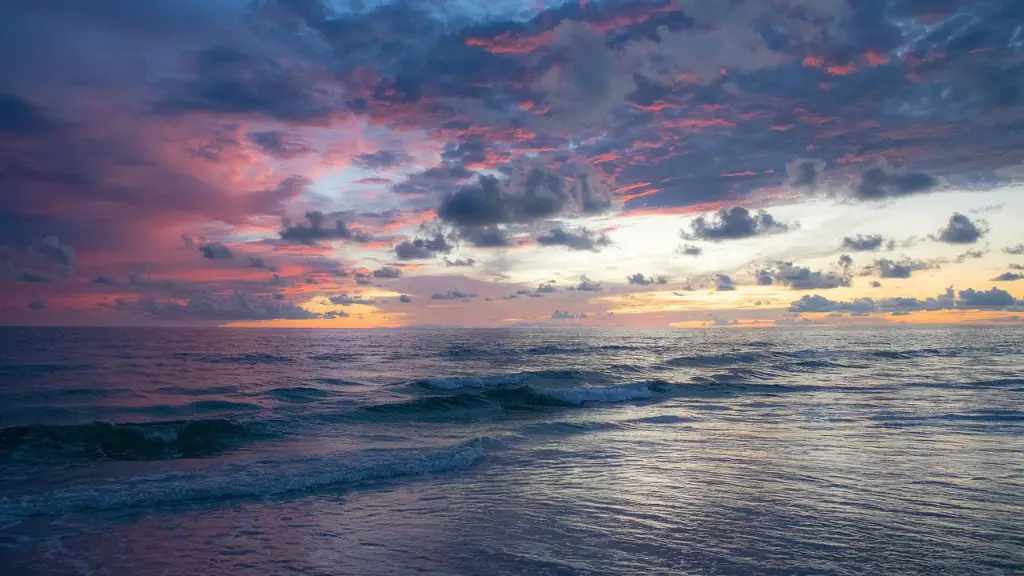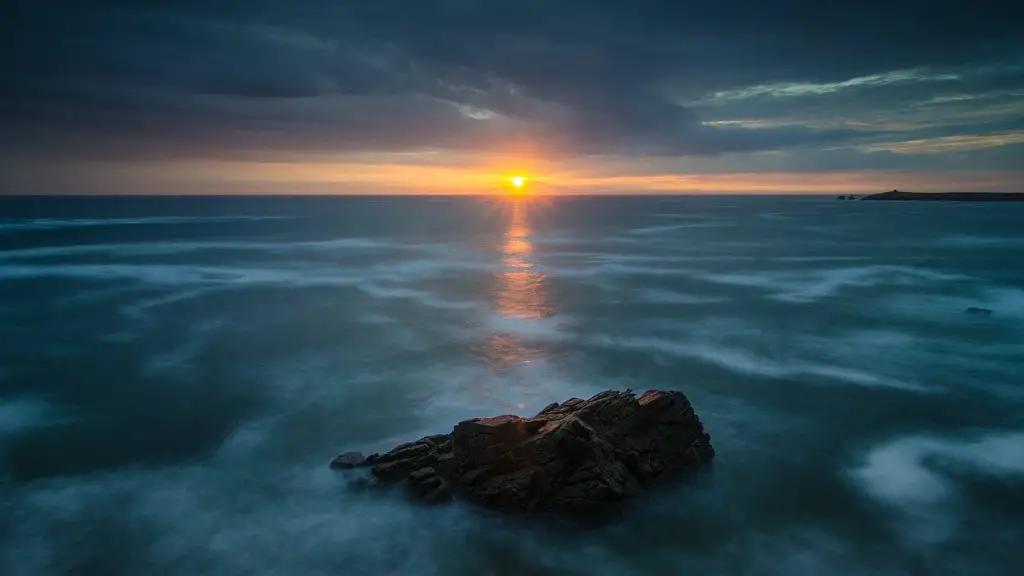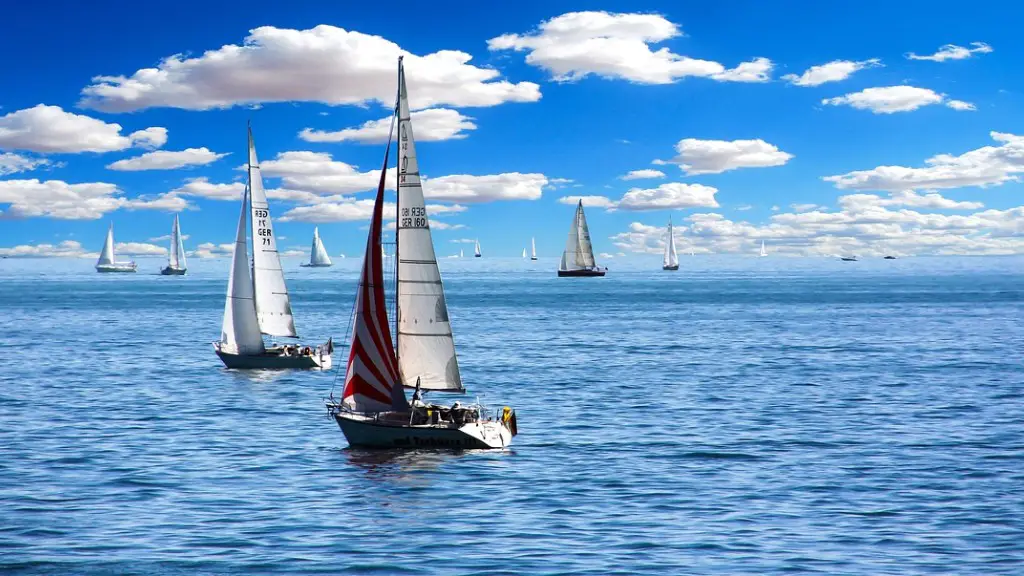Geography of the Caribbean Sea
The Caribbean Sea is a tropical, warm body of water located in the western Atlantic Ocean, bounded by the Caribbean Islands and the mainland of Central and South America. The Caribbean Sea is located between North America and South America and is surrounded by most of the Caribbean Islands and some of the Gulf of Mexico. The Caribbean Sea has a total area of around 1.65 million square miles and stretches north and south from the Florida Keys in the United States to the northern coasts of Colombia and Venezuela in South America. The Caribbean Sea is connected to the Atlantic Ocean, having the Straits of Florida, the Yucatan Channel, and the Windward Passage, in the northwest to the Lesser Antilles islands.
Impact of Caribbean Sea in the Regional Climate
The Caribbean Sea is an important factor in driving the regional climate. The average temperature of the sea surface is 28°C (82°F). This, coupled with the constant sunlight and humidity resulting from the nearby land masses, creates an ideal environment for convectional rainfall. As air masses become charged with moisture from the Caribbean Sea in the lower levels, the air is forced to rise and condense, leading to thunderstorms and rain. As storms move near the coasts of the islands and mainland, they provide a significant source of rainfall to the parched areas. The trade winds also affect the climate of the area as they move westward and can come with large amounts of rain and also cause hurricanes.
Economic Role of The Caribbean Sea
The Caribbean Sea is a major trading route, vitally important to many of the nations in the region. Hundreds of merchant vessels travel to and from the Caribbean Sea, bringing in products and services, and taking out goods and services that are exported around the world. The Caribbean Sea is also a paradise for tourists who visit for its crystal-clear waters, warm climate and culturally rich communities. The countries that are surrounded by the Caribbean Sea rely on the tourism industry to bring in a steady influx of money, which allows them to further develop their economies and employ the locals.
Impact on Fauna and Flora of the Caribbean Sea
The Caribbean Sea is home to a wide variety of marine life, ranging from fish and sea turtles, to mammals and coral reefs. Its warm and shallow waters are perfect for coral reefs to thrive and animals to reproduce, making it an important habitat for many species. The coral reefs around the Caribbean Sea often become large underwater cities with a variety of colorful creatures like sponges, anemones and sea cucumbers. Also, the Caribbean Sea is home to a large array of tropical fish and provides shelter for many sea mammals like whales, dolphins and porpoises.
Threatening Factors of the Caribbean Sea
The Caribbean Sea is also facing some major threats due to human impact. Pollution from nearby industries and cruise ships has caused significant damage to the flora and fauna in the Caribbean Sea. As the ocean rises due to climate change, the coral reefs are becoming increasingly fragile and are in danger of being wiped out by rising ocean temperatures. Additionally, overfishing is another major problem that has had an immense impact on the ecosystems of the Caribbean Sea.
Where is the Caribbean Sea on a World Map?
The Caribbean Sea can be found on a world map bordering the western side of the Atlantic Ocean and South America. It stretches 2000 km (1200 mi) north to south and 1600 km (1000 mi) east to west, occupying an area of roughly 1.65 million square miles or 4.2 million square km. The Caribbean Islands are its primary borders, stretching out from the southern coast of Mexico to the northern coast of Venezuela.
Protection Strategies for the Caribbean Sea
Fortunately, many countries, organizations, and private citizens are taking action in order to protect the Caribbean Sea. Governments in the region are introducing regulations and laws to protect fragile coral reefs and to limit the impact of fishing and pollution. Organizations such as the Marine Conservation Institute and the Caribbean Marine Research Center are working towards protecting the marine life of the area and raising awareness of the potential dangers to its ecosystems.
Government Policies and Programs to Protect the Caribbean Sea
The Caribbean Sea is a shared resource and many governments in the region have taken steps to protect it. For example, the United Nations (UN) has created a number of initiatives focusing on the conservation and sustainable use of the natural resources of the Caribbean Sea. These measures include regulations on marine pollution, sustainable fishing practices, protection of coral reefs, mangrove reforestation, and research on the effects of climate change. In addition, the International Convention for the Prevention of Pollution from Ships has helped to drastically reduce the amount of pollution from vessels in the Caribbean Sea.
Notable Programs and Organisations Working to Protect the Caribbean Sea
The Caribbean Sea and the flora and fauna of the region are also supported by a number of dedicated organisations that are working to raise awareness of the threats and develop effective strategies for protection. A few of the most notable organizations include The Nature Conservancy, Conservation International, WWF and the Caribbean Environmental Protection Association (CEPA). All of these organizations have actively worked to educate the public about the importance of protecting the Caribbean Sea.
Education and Awareness Initiatives for the Caribbean Sea
Education and awareness are the most powerful tools when it comes to protecting the Caribbean Sea. Countries in the region are launching educational campaigns to teach the public about the importance of the environment and potential negative impacts of ignorance. For example, the Caribbean Regional Fisheries Mechanism (CRFM) has developed a program focused on increasing awareness and understanding of the Caribbean Sea among students and the general public. Additionally, the Caribbean Environmental Network (CEN) has launched several campaigns to promote conservation and protection of the region’s ecosystems and promote sustainable development practices.


